Last Updated on by Mitch Rezman
Re-posted this on 09/01/2017 with Hurricane Harvey as a stark reminder of mother nature’s dark side.
Parrots and Evacuation Kits are some of my favorite subjects. Nora wrote this post but my introduction is from someone who has been there – us. June 23rd, 2005 Windy City Parrot burned to the ground – long story.
If you have a pet bird or any pet for that matter – what’s your plan in an emergency? Floods, fires, frogs, locusts?
Sure you’re on your game with the latest high-tech smoke and high water sensors in your home but let me quote from some recent headlines.
6/25/15 Boston – New England Record Snow Tracker: Boston Breaks All-Time Seasonal Snow Record in 2014-2015
(What’s your backup heat source?)
8/29/15 Florida – Governor: State of Emergency Still In Effect For Florida as Erika Remnants Approach
7/17/15 Illinois – Tornadoes reported in part of Illinois
(Cameron, a town of about 600 people that’s roughly 200 miles southwest of Chicago. No one except first responders was being allowed into the town).
9/16/15 California, United States has had: (M1.5 or greater) – Recent Earthquake Near California, United States – 24 earthquakes today (9/16/15) – 125 earthquakes in the past 7 days – 463 earthquakes in the past month – 6,307 earthquakes in the past year The largest earthquake in California, United States: – today: 4.0 in Yucaipa, California, United States – this week: 4.7 in Altamont, Oregon, United States – this year: 5.7 in Fortuna, California, United States.
I feel strongly that it’s always good to hope for the best than prepare for the worst – Nora’s got it right – please heed her cautions.
We dodged the bullet this week here in Central Florida. The recent Tropical Storm Erika caused storm predictions that showed one possible track where the storm became a Category Two hurricane before making landfall anywhere from Miami to Jacksonville.
Our governor had declared the entire state of Florida in a state of emergency before Erika blew apart in the islands. Lives were lost while this system was only a tropical storm, so it definitely had my attention.
We missed this one, but many times we haven’t been so lucky. I’ve had to evacuate a few times because I choose the beach lifestyle. It’s just one of the prices I pay for living so close to my beloved ocean. There are others, too, but I consider it worth it.
I live about 80 steps from the dune crossover in Cape Canaveral. No, I’m not in one of those million-dollar ocean-front homes.
But there are only three of those between me and the ocean, offering tons of debris to hit our modest apartment building should a big storm surge hit. I’m upstairs but in a big storm, that’s no real protection and means our roof could come off from the winds.
I’d consider staying for a Category One hurricane, but anything stronger means going at least to the mainland or further based on the storm strength and path.
This building has withstood many hurricanes over the years since it was built, probably in the early ’60s during the space boom. I can’t guarantee it would last through another though and won’t risk my life on the gamble. Besides, for a major storm, evacuation becomes mandatory.
Hurricane season extends from June 1 to November 30 but hurricanes, also called tropical cyclones, can form any time of year. The official season dates reflect only when weather records indicate the conditions are most likely to exist to allow the formation of a tropical weather system.
In the years I’ve lived here, it seems the Labor Day weekend, or just before or after is a prime time for storm development.
You may not worry about hurricanes because you live miles and miles from a beach. But there isn’t a part of the country that doesn’t have some type of hazard, whether it is blizzards, mudslides, earthquakes, wildfires, tornadoes, or hurricanes.
Even a strong Northern Easterner can damage homes. The point is evacuation kits are critical for every home, no matter what you call yours or what your area’s hazard happens to be.
Mine is a hurricane evacuation kit. I have one for me and my partner and I have one for the birds too.
As Labor Day weekend peeks around the corner, I am reminded that we are entering the peak of hurricane season.
This means that parrot parents should double-check that they have on-hand supplies to cover the needs of their parrots should a major storm develop.
I checked my supplies on the 1st of June when the season arrived and I always recheck around Labor Day and update supplies.
This year’s predictions were that this would be a strong year for the Pacific West Coast weather phenomena known as “El Nino”. Meaning “Little Boy”, this phenomenon occurs when warmer currents in the Pacific Ocean affect global weather patterns, resulting in the reduction of the surface water temperature in the Atlantic and Gulf of Mexico.
The Pacific coastline enjoyed some much-needed rainfall, especially considering California has experienced 4 consecutive years of drought.
Tropical systems that can develop into hurricanes are born over in the warm water of the Atlantic, often off the coast of Africa.
The hotter the surface water temperature in the Atlantic and the longer the system has over open water, the more it can feed off the warm water, forming a convection that becomes a hurricane.
When residents of the East Coast initially hear the forecast for hurricane season, a sigh of relief can be heard when El Nino is expected to be strong.
Once the National Oceanic and Atmospheric Administration release projections, residents of hurricane-prone beaches and flood zone areas could become complacent, perhaps doing only doing a check on supplies leftover from last year. It can be all too easy for those who have lived along the beaches and haven’t seen what a severe hurricane can do yet.
It’s important to remember that during El Nino years, the number of storms may be light but those that come through can often be extra-strong. Hurricane Andrew developed in an El Nino year.
Hurricane David in 1979, the first hurricane I experienced here was also in a strong El Nino year. Fortunately, it did little damage, coming in as a Category One.
The opposite of El Nino is La Nina. In these years, we watch out because hurricane development can be more likely and more storms tend to develop into hurricanes.
Enough science lesson thought. Let’s get into what happens if one actually develops and it’s headed toward us. We may not be the bull’s eye but even miles away a big hurricane can cause damage along with feeder bands.
What Is a Reliable Bird-safe Emergency Heat Source?
I keep an emergency kit ready all the time. My birds’ kit contains one month of food supplies. When I purchase new food supplies, I rotate with ones in the emergency kit out and replace them with the freshest food so that my supplies are fresh all the time.
Far too many people just place a supply of food for evacuation into their supplies and never change the supply.
No matter if you feed seed or pellets, they go bad after a while, get mothy and the birds don’t get the nutrition they need from the food. As a minimum, the parrot food stock in any emergency kit should be changed out every three months.
Depending on why you might need to evacuate should dictate the amount of food you keep in your kit.
While history tells me I won’t need to be away more than a day or three at the most (that one the hurricane followed me and I had to ride it out on the mainland far north of here), I remember Hurricane Andrew where there were no stores in Miami left standing to restock parrot food or anything else.
An aside here: After Andrew, Kennedy Space Center prepared a caravan of semi-trailers to carry supplies and I sent all the birds seed in various sizes I could afford to contribute.
The other parrot parents I knew also joined me in sending parrot supplies so hundreds of pounds of parrot food of all types joined the people, dog, and cat supplies going to help the stranded victims.
But it was some time before stores reopened to provide a supply chain to parrot owners. We tried to ensure that every car then went south also carried at least one big bag of parrot food.
As soon as I could, I filled my car with nothing but bird supplies and headed there myself. The destruction left me in awe. I’d never seen anything as horrible before or since.
A bit off-topic, but I found it interesting that Parrot Jungle, my favorite stop in Miami, didn’t lose a single one of their hundreds of parrot or non-parrot birds in the Andrew disaster.
Parrots went home with people in cages and the large flock of pink flamingos was herded into the large restrooms and the exits were blocked. The property sustained damage but no lives were lost. Now, let’s get back on topic.
In my emergency evacuation kit, I also have an extra first aid kit for the birds stashed in their evacuation kit. This first aid kit is a bit different than the one I use around the house.
It also has grooming items in it in case we don’t return home or don’t have a home for a while. I make sure at this time of year that the powder or gel for quickly stopping bleeding has not become outdated. It’s replaced when it nears expiration.
I have an extra clean empty plastic spray bottle available. Should we be stuck here in the heat with no power and the birds become too hot, a cooling shower can keep their body temperatures from going into the fatal zone.
Since my parrots get along together, I have a single travel cage they can evacuate in.
While it isn’t ideal for long term living due to its small size, if we had no home to return to, they could survive in this cage for as long as they had to until we could either get home or get somewhere that would allow us to begin to set up again.
AN EMERGENCY IS NOT THE TIME TO FIND OUT YOUR BIRD IS AFRAID OF A TOWEL AND ITS TRAVEL CARRIER.
You don’t want to have this conversation with your bird while F3 tornados are touching down across town.
Everything else my birds would need is contained in the human evacuation supplies. Water can be shared. Towels and paper products are in our supplies.
If you don’t know what to put in an emergency kit for your area, you can learn from www.ready.gov all about preparing basic emergency kits.
The only things I would grab on a last-minute basis are whatever kinds of fresh food I happen to have on hand that does not have to be refrigerated. Fruit and fresh vegetables come along for use by us and sharing with the birds.
If I had a bird on medication, I’d also be sure that was included but fortunately, that isn’t the case at this time.
Don’t count on going to the store at the last minute to stock up. Although we have several large grocery stores and a few pet shops, the shelves are empty within hours of the announcement that we are located in the “cone” of possible landfall.
Keep your supplies stocked when you do your regular shopping so you don’t end up in the fight for the last water, canned tuna, or bag of bird food.
Wherever you live, whatever may befall you and your birds, be prepared. It is far better to be prepared and never need to use your evacuation kit than to need to leave and have nothing ready.
Approved by Catherine Tobsing
Mitch’s addendum to your birdie evac kit
dish soap – poop off – disinfectant – blanket/sheet to cover the cage – toys – hot water bottle – grooming supplies – Wire, pliers, and duct tape (in transit carrier repairs) on the carrier in a taped zip lock or bird proof steel vault your name – phone number – address – a description of your bird incl species – age – breed – sex – name of your bird – leg band or microchip ID – pet insurance policy number – your veterinarian info – feeding schedules – medical conditions – behavior problems – proof of ownership (pictures don’t count. birds of the same species all look identical) – flashlight – cable ties
editorial addendum
First, know where your carrier(s) is along with other evacuation supplies
Don’t wait until an emergency to introduce your bird to the carrier. In an actual emergency, you’ll have a hard enough time keeping your presence of mind keeping track of family members and pets.
You don’t want to be wrestling with a frightened bird who’s never even seen the new carrier let alone ever been inside.
Have a plan and practice it at least once – don’t fall into the “this will never happen to me category”.
Our home evac kit which is for us and our bird contains
- A sealed bag of seed with a far-out expiration date
- 1-gallon drinking water
- 12 Energy bars
- 2 Flashlights
- Sealed box of batteries for the flashlights
- Crank type radio (needs no batteries)
- Clean towel (in case we have to towel the bird)
- 2 boxes of baby wipes
- Bird first aid kit
- Human first aid kit
- List of emergency
We keep everything in an old but sturdy backpack under the bed in the guest room
Written by Mitch Rezman
Approved by Catherine Tobsing
your zygodactyl footnote
Author Profile

Latest entries
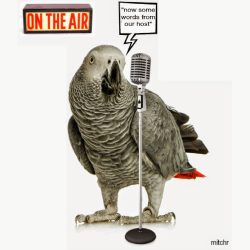 Bird & Parrot CareJune 20, 2025Understanding the Best Way to Use Prevue Pets Mimic Me Voice Trainer
Bird & Parrot CareJune 20, 2025Understanding the Best Way to Use Prevue Pets Mimic Me Voice Trainer Bird BehaviorJune 6, 2025How Do I Keep My Parrot From Dumping His Food Every Day?
Bird BehaviorJune 6, 2025How Do I Keep My Parrot From Dumping His Food Every Day? Birds & LightingMay 16, 2025I Am Seeking Clarity About Lighting for My Birds Cage
Birds & LightingMay 16, 2025I Am Seeking Clarity About Lighting for My Birds Cage Bird RescueApril 29, 2025How Do We Re-Home a 17 yr Goffin Cockatoo?
Bird RescueApril 29, 2025How Do We Re-Home a 17 yr Goffin Cockatoo?
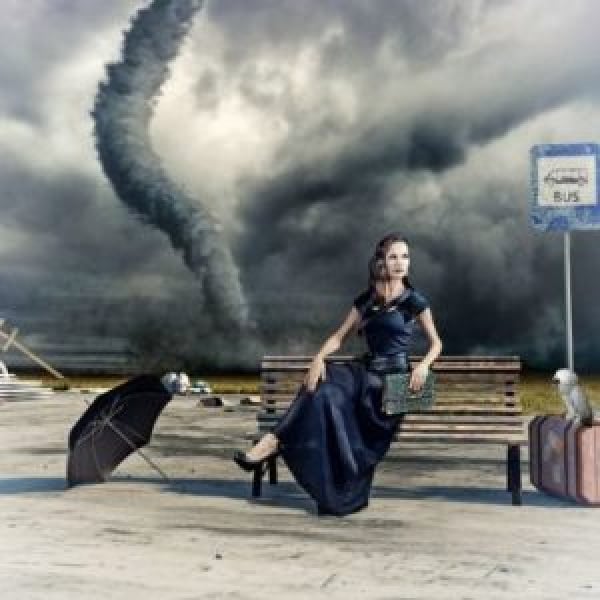
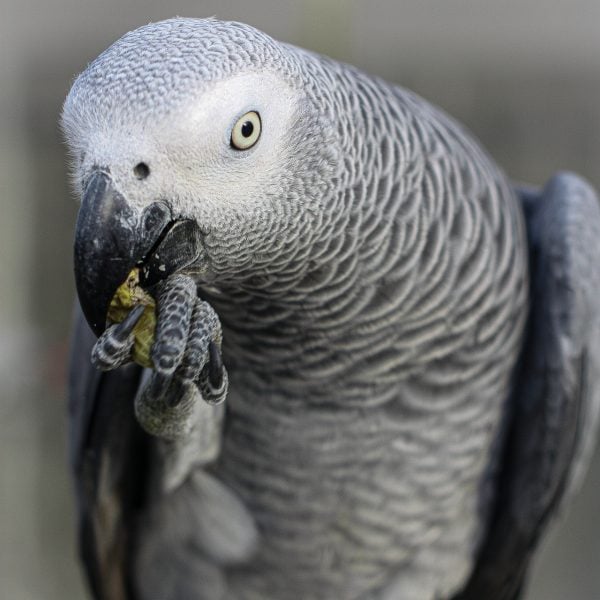
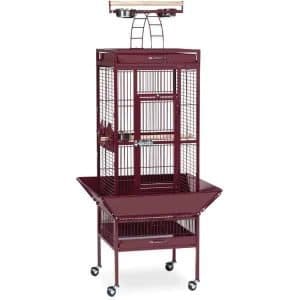
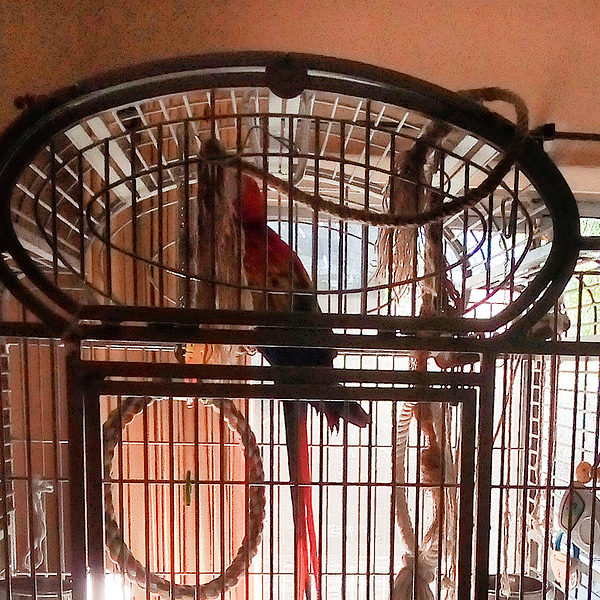

Lisa
3 Sep 2017Had to scan a lot of ‘science lesson’ to get to the meat 🙂 but thanks very much for posting this. I hadn’t thought about packing the styptic powder. Probably most of us have our birds on ground level, so it’s also good to have another cage sort of thing to move them upstairs in… I have a medium dog crate with a couple perches. Even though I don’t live in a typical flood area, I often wonder whether I should have a small boat stored under the house… if I can’t leave in the car, I need an ark to put all my pets in!
WindyCityParrot
4 Sep 2017glad we could help Lisa
Lisa
3 Sep 2017Had to scan a lot of ‘science lesson’ to get to the meat 🙂 but thanks very much for posting this. I hadn’t thought about packing the styptic powder. Probably most of us have our birds on ground level, so it’s also good to have another cage sort of thing to move them upstairs in… I have a medium dog crate with a couple perches. Even though I don’t live in a typical flood area, I often wonder whether I should have a small boat stored under the house… if I can’t leave in the car, I need an ark to put all my pets in!
WindyCityParrot
4 Sep 2017glad we could help Lisa
Michael Torras
22 Oct 2017I agree with all of this too. A good hurricane hole can be an invaluable resource when a large storm is pressing. However, do not be misguided. If a Category 4 or 5 storm hits directly, no marina will be safe.
http://hurricanehole.org